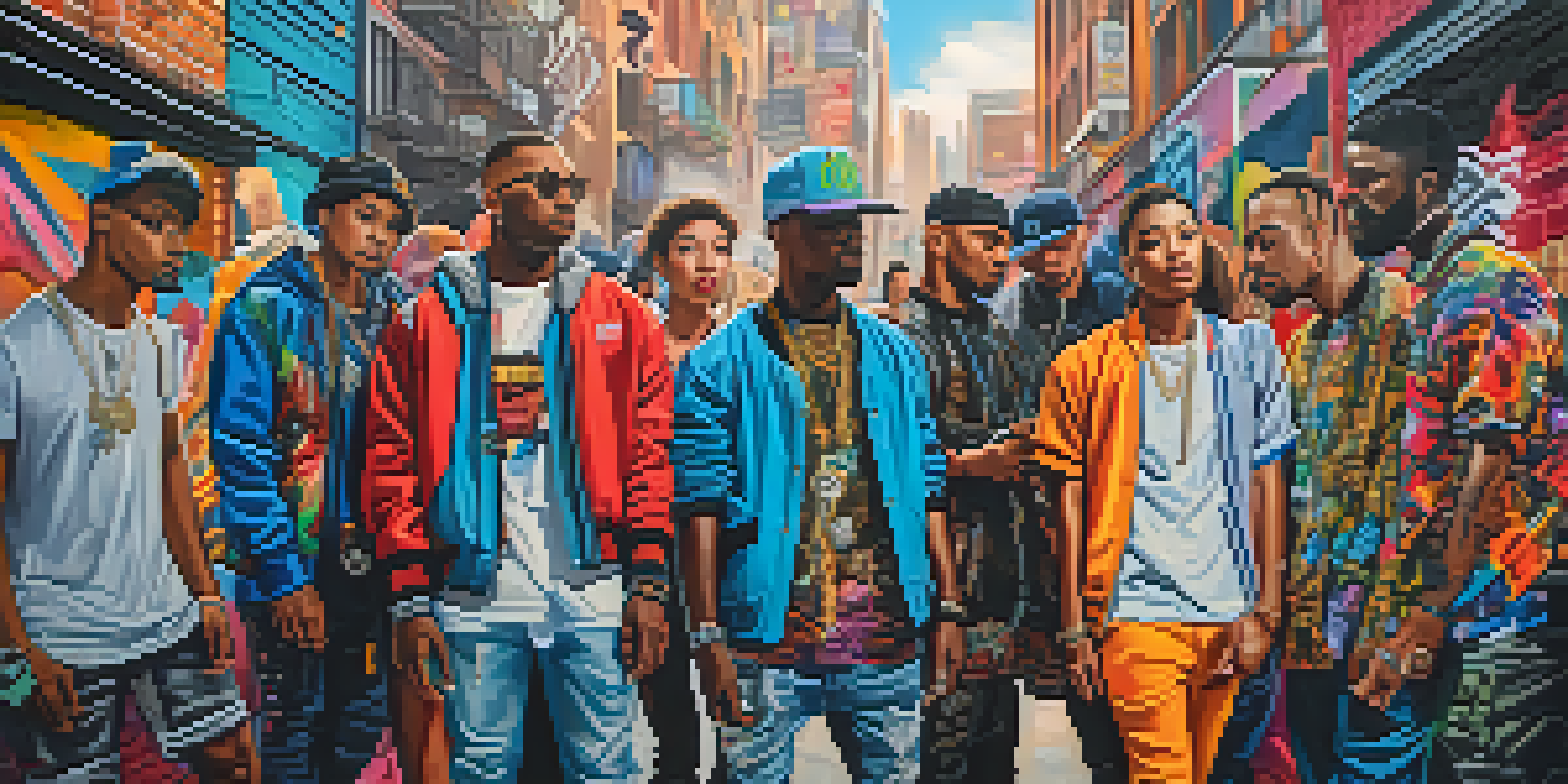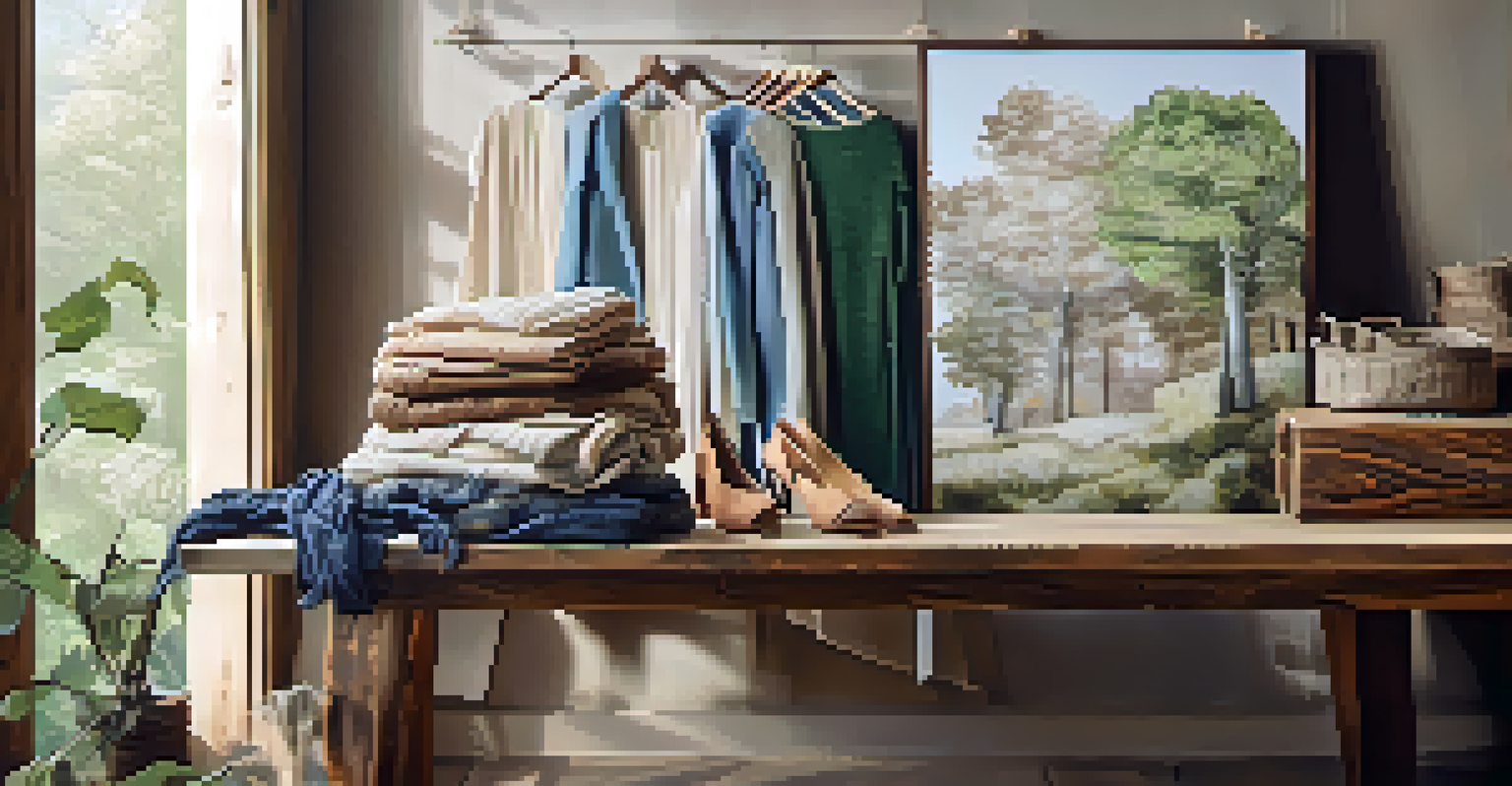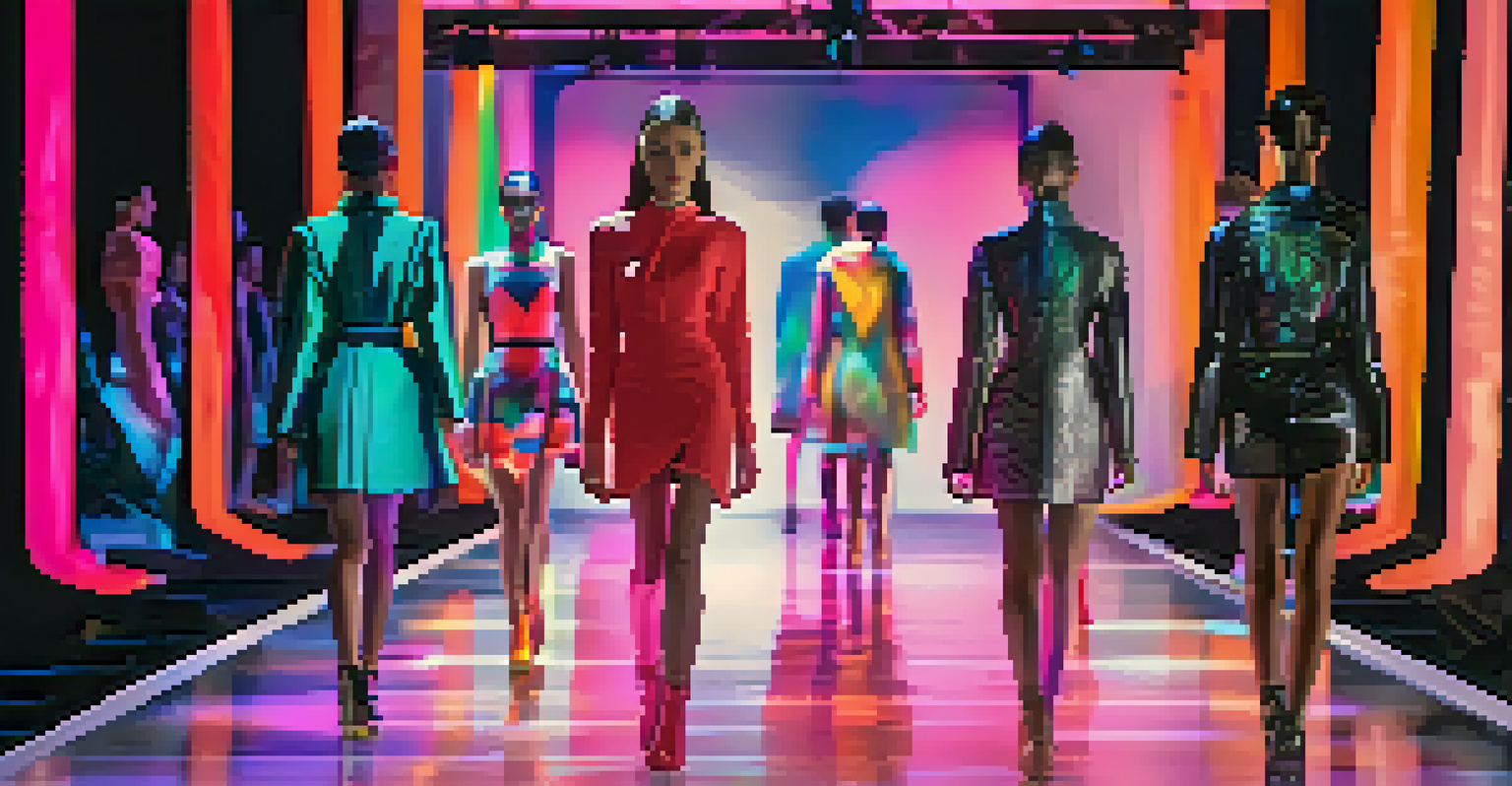The Aesthetics of Fashion: An Artistic Exploration of Trends

Understanding Fashion as Art: A Unique Perspective
Fashion is often seen merely as clothing, but it is much more than that—it's a form of art. Just as painters express their emotions through colors and strokes, designers communicate their vision via fabrics and silhouettes. This artistic exploration allows trends to evolve and reflect societal changes, making fashion a fascinating subject.
Fashion is the armor to survive the reality of everyday life.
Take, for example, the rise of streetwear, which fuses art and everyday life. It's a canvas for self-expression that challenges traditional norms, allowing individuals to showcase their personalities through their attire. This blurring of lines between fashion and art invites us to appreciate what we wear on a deeper level.
In essence, when we view fashion through the lens of art, we unlock new meanings and appreciate the creativity involved. This perspective not only enhances our understanding of trends but also encourages us to embrace our unique style as a form of personal artistry.
The Influence of Culture on Fashion Trends
Cultural influences play a significant role in shaping fashion trends, reflecting the values and aesthetics of different societies. For instance, the vibrant colors and patterns of African textiles have inspired countless designers, leading to a resurgence of tribal prints in modern collections. This interplay between culture and fashion highlights how interconnected our world truly is.

Moreover, events like music festivals and art exhibitions often dictate what becomes trendy. Think of how the bohemian style gained popularity through the 1960s counterculture movement, or how punk fashion emerged from the gritty streets of London. Each trend tells a story, rooted in the cultural landscape of its time.
Fashion as Art and Self-Expression
Fashion transcends clothing, serving as a canvas for individual creativity and cultural commentary.
By understanding these cultural connections, we can appreciate fashion not just as a fleeting trend but as a reflection of our collective identity. As we embrace diverse influences, we enrich our wardrobes with pieces that resonate on a personal and cultural level.
The Evolution of Fashion: A Historical Overview
Fashion is a living, breathing entity that evolves over time, influenced by historical events, technological advancements, and social movements. From the opulence of the Victorian era to the minimalist designs of the 1990s, each period has left its mark on the fabric of fashion. This historical context allows us to understand the 'why' behind current trends.
Style is a way to say who you are without having to speak.
For example, the rise of fast fashion in the early 2000s transformed how we shop and perceive clothing, making trends more accessible but also raising questions about sustainability. This shift reminds us that trends are not just whimsical but are often responses to broader societal changes.
By exploring the history of fashion, we gain insights into how past trends influence present styles. It also encourages us to think critically about the future of fashion and how we can make choices that honor both creativity and sustainability.
Sustainability in Fashion: A New Artistic Direction
As awareness of environmental issues grows, sustainability has become a major trend in the fashion industry. Designers are increasingly focusing on eco-friendly materials and ethical production methods, transforming fashion into a more conscious art form. This shift challenges the traditional notion of beauty by prioritizing the planet over mere aesthetics.
Brands like Stella McCartney and Reformation are leading the charge, illustrating how sustainability can be both stylish and responsible. Their collections often feature recycled materials and transparent supply chains, proving that fashion can be a force for good. This artistic direction resonates with consumers who value both style and substance.
Sustainability Drives Fashion Forward
The movement towards sustainable practices is reshaping fashion into a more responsible and ethical art form.
Ultimately, the movement toward sustainable fashion invites us to redefine what we consider beautiful. It encourages creativity that respects the Earth, fostering a new appreciation for fashion as an art form that nurtures rather than exploits our world.
The Role of Technology in Shaping Fashion Trends
Technology has dramatically transformed the fashion landscape, influencing how trends emerge and spread. From social media platforms to virtual reality runway shows, technology creates new avenues for designers to showcase their work and for consumers to interact with fashion. This digital age has made trends more accessible than ever before.
Consider how influencers on platforms like Instagram can launch a trend overnight, making styles viral. The speed at which trends can rise and fall is unprecedented, reflecting the fast-paced nature of modern life. This constant evolution keeps the fashion industry vibrant and ever-changing.
By embracing technology, fashion becomes a dynamic art form that adapts to our lifestyles. As we navigate this digital realm, it’s essential to recognize the impact technology has on our choices and how it shapes our understanding of what’s trendy.
Personal Style: The Intersection of Fashion and Individuality
Personal style is a vital aspect of fashion, acting as a bridge between trends and individuality. While trends can guide us, it’s our unique interpretation that truly defines our aesthetic. Think of personal style as a signature or a piece of art that represents who we are at a given moment.
For example, some may gravitate towards vintage pieces, combining nostalgia with modern flair, while others might embrace minimalist designs that express simplicity and clarity. This diversity in personal expression highlights the beauty of fashion as an art form that celebrates individuality.
Technology Transforms Fashion Trends
Advancements in technology are revolutionizing how trends emerge, making fashion more accessible and dynamic.
Ultimately, the intersection of fashion and personal style encourages us to experiment and have fun with our wardrobes. It’s a reminder that while trends can inspire us, it’s our creativity and authenticity that make our fashion choices truly unique.
The Future of Fashion: Trends on the Horizon
As we look to the future, several trends are emerging that promise to reshape the fashion landscape. From the continued emphasis on sustainability to the integration of technology like AI and 3D printing, the possibilities are exciting. These innovations suggest a future where fashion is not only beautiful but also responsible and efficient.
Moreover, the rise of inclusivity is gaining momentum, with brands embracing diverse body types, cultures, and identities. This shift is crucial, as it reflects a more authentic representation of society in fashion. It challenges the traditional beauty standards and opens the door for everyone to express themselves through style.

In conclusion, the future of fashion is bright and full of potential. As trends evolve, we can expect an artistic exploration that values creativity, sustainability, and individuality, ensuring that fashion remains a vibrant form of self-expression.